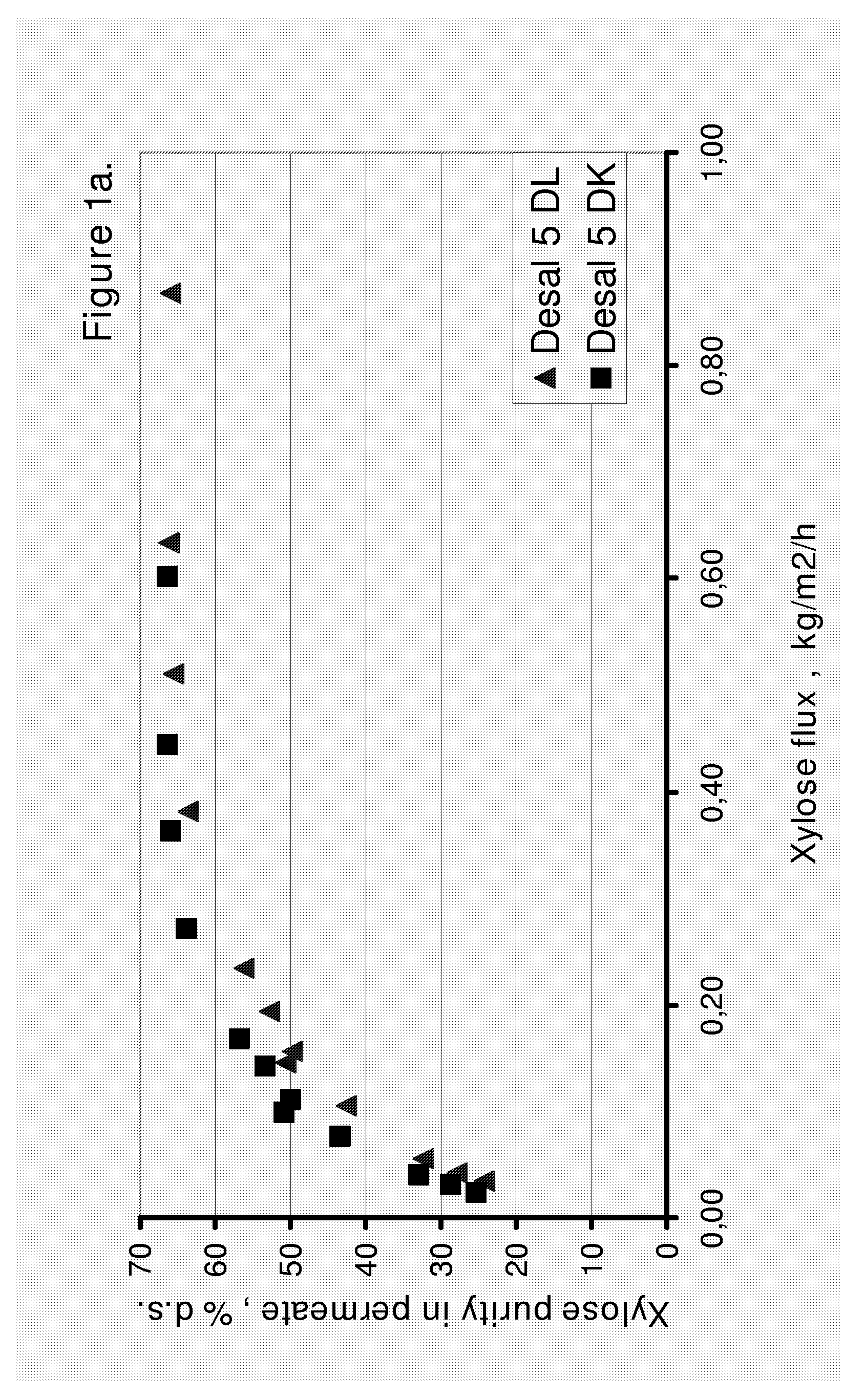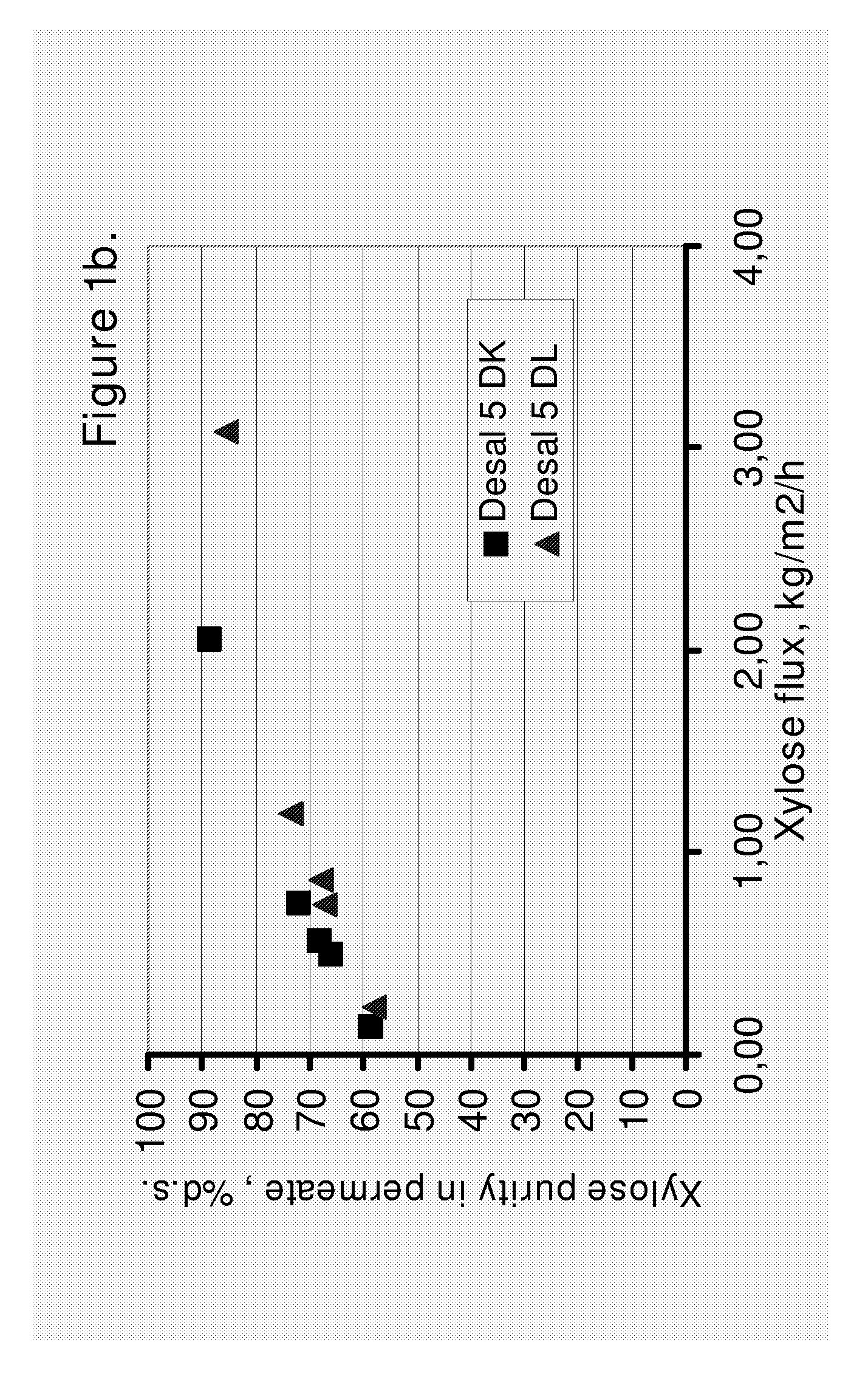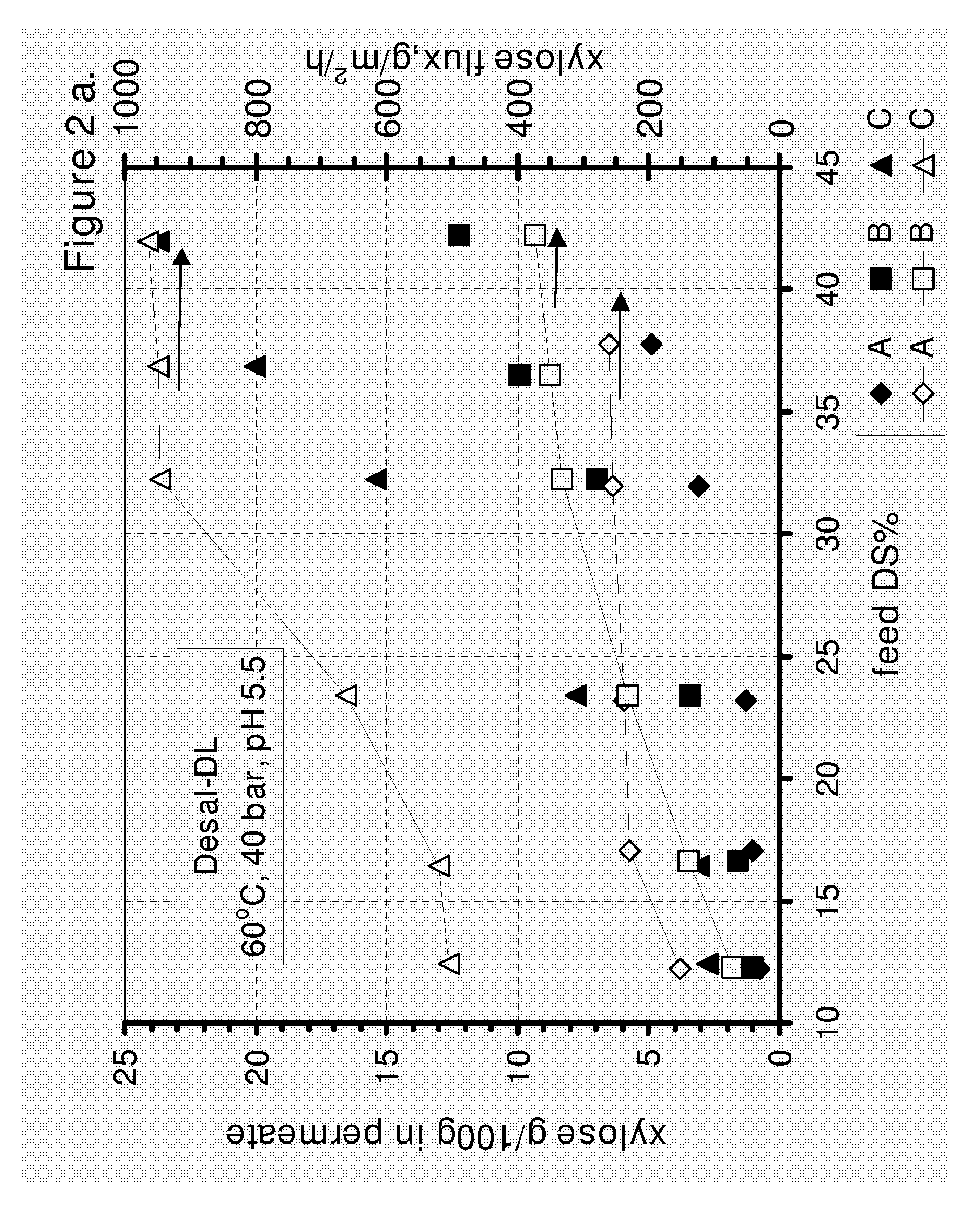Separation process
a separation process and xylose technology, applied in the direction of glucose production, reverse osmosis, membranes, etc., can solve the problems of insufficient industrial operation, low xylose yield achieved, and difficult to achieve high xylose flux (high capacity) at the end of the nanofiltration, so as to improve the performance of the nanofiltration of xylose and achieve high xylose flux , good yield
- Summary
- Abstract
- Description
- Claims
- Application Information
AI Technical Summary
Benefits of technology
Problems solved by technology
Method used
Image
Examples
example 1a
[0107]Nanofiltration was carried out for a 1195 kg batch of xylose-containing wood hydrolysate (a chromatographically separated xylose fraction of Mg-based acid spent sulphite pulping liquor), which had a dry substance content of 26.6%. The nanofiltration equipment used for the nanofiltration was a pilot-size membrane test unit equipped with Osmonics Desal 5 DK (5.6 m2) and Osmonics Desal 5 □L (5.6 m2) spiral wound membranes. The nanofiltration was carried out at a pressure of 33 bar (inlet pressure) and at a temperature of 60° C. During the nanofiltration, 1031 kg diafiltration water was added to the circulation tank of the nanofiltration equipment to improve the yield of xylose to the permeate. The collected permeate was divided into two batches of 1037 kg and 765 kg, respectively. In addition to the permeate batches, a batch of 424 kg of the concentrate (having a dry substance content of 22.4%) was withdrawn from the retentate side of the nanofiltration equipment.
[0108]Table 1a s...
example 1b
[0111]Nanofiltration was carried out for a 840 kg batch of a xylose-containing wood hydrolysate derived from the same source as in Example 1a.
[0112]However, the feed was a more dilute solution having a dry substance content of 15.0% on DS. The nanofiltration equipment was the same as in Example 1a. The nanofiltration was carried out at a pressure of 35 bar (inlet pressure) and at a temperature of 60° C. During the nanofiltration, 100 kg diafiltration water was added to the circulation tank of the nanofiltration equipment to improve the yield of xylose to the permeate. The total amount of the collected permeate was 870 kg and the amount of the concentrate collected from the retentate side was 70 kg.
[0113]Table 1b shows the dry substance content (%) and the xylose purity (% on DS) of the feed, concentrate and permeate of the nanofiltration. The overall xylose yield in the permeate was 95%.
TABLE 1bDry substance content and xylose purity of the nanofiltrationXylose, %Batch size, kgDS, %...
example 2
[0116]Nanofiltration of xylose-containing solutions from different stages of SMB separation of acid spent sulphite pulping liquor was studied (xylose solutions A, B and C). Average compositions of the feed solutions are shown in Table 2a. The main constituent of the rest (not shown) is lignosulphonates.
TABLE 2aComposition of the feed solutionsComposition, % on DSComponentSolution ASolution BSolution CXylose12.320.542.5Glucose1.95.84.1Galactose + rhamnose1.25.03.7Arabinose + mannose1.36.85.0Xylonic acid4.313.66.9Xylobiose0.10.10.0Acetic acid1.81.11.6Salts5.26.94.5pH5.24.24.9*salts are the sum of Na, K, Ca, Mg, SO3 and SO4
[0117]The experimental procedure is shown in Table 2b.
TABLE 2bExperimental procedureDry substance contentFeed solution° C.pHpin, barof the feed, %Solution A605.54040→35→30→22→15→11Solution B605.54040→35→30→22→15→11Solution C605.54040→35→30→22→15→11
[0118]The nanofiltrations were done at constant temperature and pressure. For each dry substance of the feed, filtration ...
PUM
| Property | Measurement | Unit |
|---|---|---|
| temperature | aaaaa | aaaaa |
| temperature | aaaaa | aaaaa |
| temperature | aaaaa | aaaaa |
Abstract
Description
Claims
Application Information
 Login to View More
Login to View More - R&D
- Intellectual Property
- Life Sciences
- Materials
- Tech Scout
- Unparalleled Data Quality
- Higher Quality Content
- 60% Fewer Hallucinations
Browse by: Latest US Patents, China's latest patents, Technical Efficacy Thesaurus, Application Domain, Technology Topic, Popular Technical Reports.
© 2025 PatSnap. All rights reserved.Legal|Privacy policy|Modern Slavery Act Transparency Statement|Sitemap|About US| Contact US: help@patsnap.com



